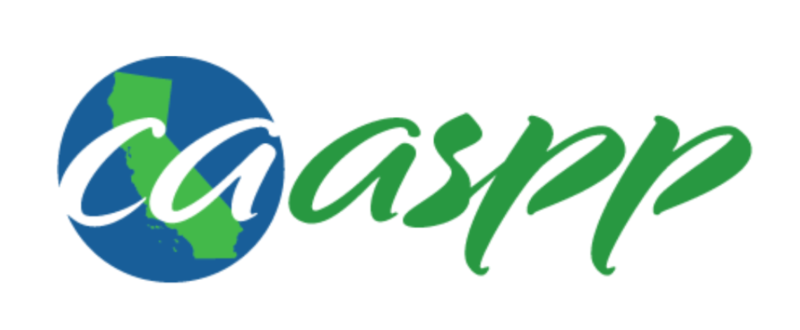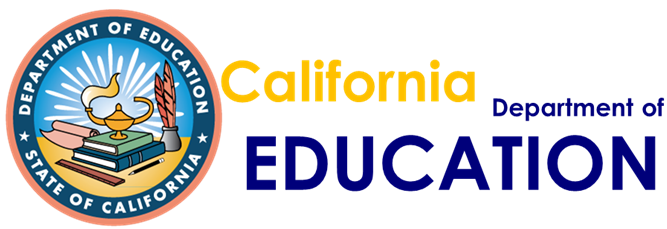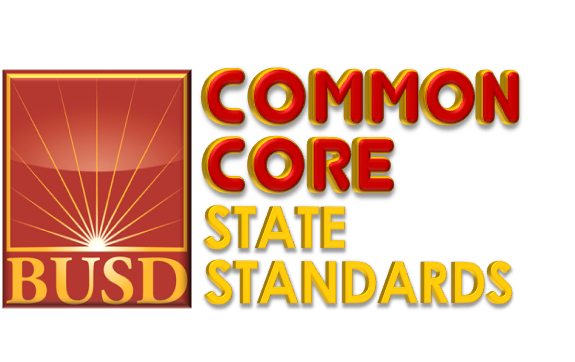
California Assessment of Student Performance and Progress
| Web Page Navigation | |||
| Other Statewide Assessments | Informational Videos | Resources & Related Pages | |
| Barstow Unified School District 2015-16 State Assessments |
|
Click to link below to view the 2015-16 BUSD testing pamphlet outlining assessments and dates |
| 2015-2016 CAASPP Student Score Report Videos | |
|
This video will help parents and students learn about the new CAASPP Student Score Report for 2015–16.
Published on May 6, 2016
|
Spanish video coming soon |
|
CAASPP 2015-16 Student Score Reports |
|
|
2015-16 CAASPP Results are scheudled for public release August 15, 2016.- California Department of Education |
|
|
Score Report Resources (http://www.cde.ca.gov/ta/tg/ca/caasppssrinfo.asp )
|
|
| CAASPP Assessments | |
|
Smarter Balanced Summative Assessments (SBAC) for English–language arts (ELA) and mathematics in grades three through eight and eleven. Computer-based assessments. For more Information visit the BUSD SBAC Webpage |
California Alternate Assessment (CAA) English–language arts and mathematics assessment in grades three through eight and eleven. Students with significant cognitive disabilities. Computer-based assessments. Video: California Alternate Assessments - 2016 (California Department of Education)- March 9, 2016 A look at the new California Alternate Assessments or CAA and how they better fit the teaching and learning taking place in classrooms. This video also includes an overview at how the CAA provides a more individualized and engaging experience for students - along with providing more support for the students who need it. |
| Science assessments in grades five, eight, and ten. Students will take 1 of the following tests: California Standards Tests [CSTs], California Modified Assessment [CMA], or California Alternate Performance Assessment [CAPA]. Paper-pencil assessments. | Standards-based Tests in Spanish (STS) for reading/language arts in grades two through eleven. Paper-pencil assessments. (Optional Assessment). |
|
Early Assessment Program (EAP) ELA and mathematics in grade eleven. Available as part of the Smarter Balanced summative computer-based assessments. (Optional, students select whether they want to share their results with CSU and/or other California Community Colleges). |
|
Please see the CAASPP Previous Years webpage for information on scores and other resources.

California Assessment of Student Performance and Progress
|
A Comprehensive Plan for Student Success |
Knowing that public schools are preparing students for the challenges of the future, California has developed a comprehensive plan for high-quality teaching and learning in every school. We have a long way to go, but our work is well under way, with higher academic standards, more decision-making in the hands of schools and communities, and more resources dedicated to schools and to students with the greatest needs.
Gradually, we’re providing more support for teachers, more resources for students and more access to technology. As a result, exciting changes have begun to take place inside our classrooms. Along with reading to follow a story, students are learning to read to cite evidence and draw logical conclusions. They are learning to use math to solve real-world problems rather than merely pick out the right multiple-choice answer.
The system-wide changes we have begun are focused on helping students succeed in the long run, achieving their dreams of college and a career. They will take considerable time and effort to carry out. That’s why the course we’ve set in California is to carefully phase in change as state and local capacity grows.
|
A New Testing System Built to Help Teachers |
Teachers want to know what students know so they can adjust instruction. Like class assignments and report cards, tests provide one more way to assess student progress. Because the things we want students to know and be able to do have changed, our tests must change as well.
This spring, students will take part in the first statewide administration of the California Assessment of Student Performance and Progress (CAASPP) for students in grades three through eight and grade eleven for the 2014–15 school year. These computer-based tests will replace the former paper-based, multiple-choice assessments in English language arts/literacy (ELA) and math.
The tests are an academic check-up, designed to give teachers feedback they need to improve instruction and the tools to improve teaching and learning. The assessments will use computer adaptive technology to provide more accurate information about individual student performance. And because the tests are taken online, information will be available to teachers, schools and school districts on a timely basis so it can be used to help students learn.
|
Scores: Resetting the System |
Like the new academic standards, the new tests are too fundamentally different from the old exams to make any reliable comparisons between old scores and new. In many cases, new textbooks and materials have only recently arrived at schools. That’s why this year’s test results will only establish a baseline for the progress we expect students to make over time.
Based on trial runs of some test questions in California and other states, many if not most students will need to make significant progress to reach the standards set for math and ELA that accompany college and career readiness.
No student, parent or teacher should be discouraged by scores, which will never be used to determine whether a student moves on to the next grade. Rather, the results will provide an opportunity to focus on the needs of students and support teachers and schools in their work.
|
Patience and Persistence |
Teachers in California support these changes because, unlike in other states, the primary purpose of testing here is to support learning, not to impose high-stakes consequences. This approach fits well with California’s new system for funding our schools, which recognizes that decisions about education dollars are best made by parents, teachers and communities themselves.
In a state as diverse and complex as California, adjustments will always be needed to make lasting progress. Patience and persistence will be required to help our schools continue to succeed during this time of transition.
| Featured Parent Resource |
|
MOVING BEYOND THE BUBBLE: IMPROVED TESTS ARE FINALLY HERE- CALIFORNIA STATE PTA SEE THE CALIFORNIA PTA STUDENT ASSESSMENTS WEBPAGE FOR MORE INFORMATION ON:
|
| Other Statewide Tests (Back to Top) |
| Visit the BUSD State Testing Page |
| Informational Videos (Back to Top) |
Transition to Assessments Based on Common Core State Standards in California
Published on Aug 21, 2013: State Superintendent of Public Instruction Tom Torlakson talks about California's transition to assessments based on the Common Core State Standards, uploaded August 16, 2013. Text:
| Resources & Related Pages (Back to Top) |

Visit the webpages below as provided by the California Department of Education
- California Assessment of Performance and Progress
- Smarter Balanced Assessment System
- Common Core State Standards


Webpage for more information on new computer based SBAC Assessments
Visit the BUSD Common Core State Standards Webpage
Updated 5/12/16

